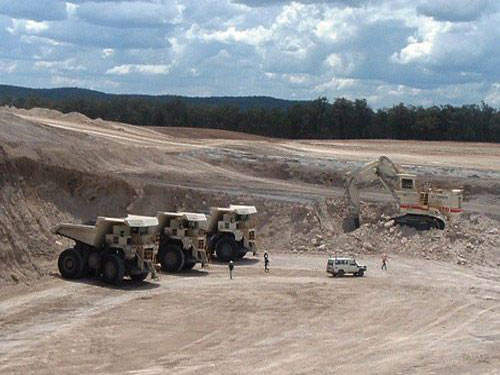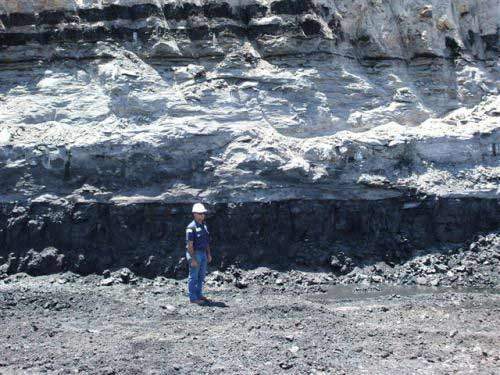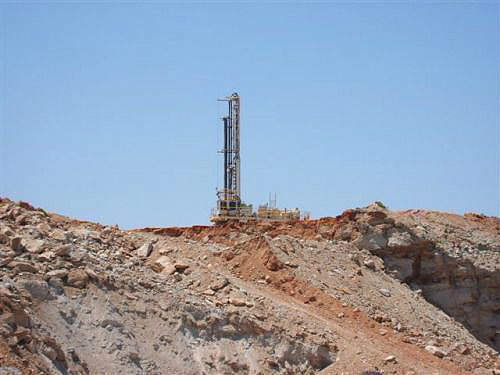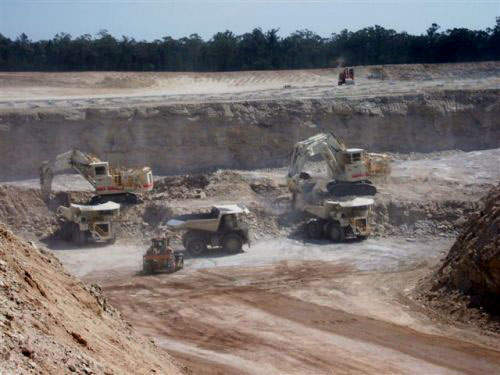The Tarrawonga open-cut mine is located in the Gunnedah Basin 16km north-east of Boggabri in northern New South Wales, Australia.
Commencing operations in 2006, the mine is run by Tarrawonga Coal Pty Ltd and is a joint venture between Whitehaven Coal (70%) and Idemitsu (30%). On 13 March 2007 Idemitsu transferred its joint venture interest in Tarrawonga open-cut to a related company, Boggabri Coal Pty Ltd.
As well as owning 30% of the Tarrawonga open cut mine, Idemitsu owns the Boggabri mine which is currently producing at an annualised rate of approximately 1.5Mtpa.
The Tarrawonga mine is expected to produce up to 1.5 million tonnes per year of low-ash, low-sulphur thermal coal via open-cut methods over the next eight to ten years.
The coal industry in the Gunnedah region is valued at approximately $60m but is expected to grow in the coming years. The industry currently supports 38 direct jobs and nearly twice as many flow-on jobs in related service industries.
However, ongoing capacity constraints at the Port of Newcastle have had a negative impact on the region the last few years. It is expected to be a number of years yet before the issue is properly resolved.
Geology and reserves
The Tarrawonga Mine sits within a part of the New South Wales coal fields called the Gunnedah Basin. The Gunnedah Basin forms the central part of the Sydney-Gunnedah-Bowen Basin system which extends along the eastern margin of Australia. The Gunnedah Basin covers an area of just over 15,000km² and comprises rocks of Permian and Triassic
age. The basin is in part unconformably overlain by the Jurassic-Cretaceous strata of the Surat Basin.
The Tarrawonga resource area is separated by a west-northwest trending rise in the basement volcanics where the coal has been deposited into a northern and southern area. These two areas provide two different potential mining targets. The northern area is being developed as a truck and shovel open-cut mine down to the Nagero Seam. Both areas may offer underground potential in the Tarrawonga Seam which is generally more than 2m thick and has raw coal ash values of less than 5%. The southern area is currently the target for the Tarrawonga underground project.
The drilling interpretation suggests that the southern resource area is generally free of any faulting. In the northern resource area there is a north trending fault with a throw of 10–15m. There is also a zone of compressional or compactional faulting along the northern side of the basement ridge. This zone is 50–100m wide.
Adjacent to and beneath the workings of the Tarrawonga open-cut there are 86.2Mt of resources in several seams deemed suitable for underground mining. One such seam has been extensively explored and shown to have low ash, low sulphur and coking properties. Whitehaven is studying the feasibility of underground mining of this seam and sharing surface infrastructure with the Tarrawonga ope- cut. This project is 100% owned by Whitehaven.
Reserves:
Recoverable reserves 8.9Mt
Measured 8.3Mt
Indicated 11Mt
Inferred 24Mt
Total 43.3Mt
Current marketable reserves of 9.9Mt.
Mining
The operating Tarrawonga open-cut mines four main coal seams (Jeralong, Merriown, Velyama and Nagero) with total seam thickness of up to 8m. Overburden removal commenced in June 2006 with first coal production in September 2006.
Mining is by truck and excavator method to produce up to 1.5 million tonnes of export coal per year. Coal is trucked 40km to the Gunnedah CHPP for selective washing and loading onto rail for transport to Newcastle.
ROM Coal is, or is planned to be, crushed at each pit (Canyon, Tarrawonga, Belmont and Sunnyside) then stacked on raw coal stockpiles prior to being trucked to the CHPP. The CHPP is a modern facility commissioned in 2003 and 100% owned by Whitehaven.
Based on available information and consultation the Tarrawonga mine is expected to be much drier than the adjacent Boggabri Coal Project mine. It therefore may operate as a dry mine at certain times when average evaporation exceeds groundwater seepage rates into the mine void.
Additionally, the results of an independent assessment established that there is a low potential for both acid formation and soluble salt generation from the overburden and interburden material. As such, there are no specific handling and emplacement requirements for these materials at the Tarrawonga mine site.
Production
In FY2007 Tarrawonga open-cut produced about 0.5Mt of semi-soft/PCI and thermal coal and will increase production to approximately 1.4Mtpa of coal from FY2008 to FY2014.
Coal quality data for the open cut includes raw proximate analysis, total sulphur, relative density and float sink at 1.45 and 1.60. The data indicates the product from Tarrawonga will be a low-ash (high-energy) and low-sulphur coal. It is marketed as PCI coal.







